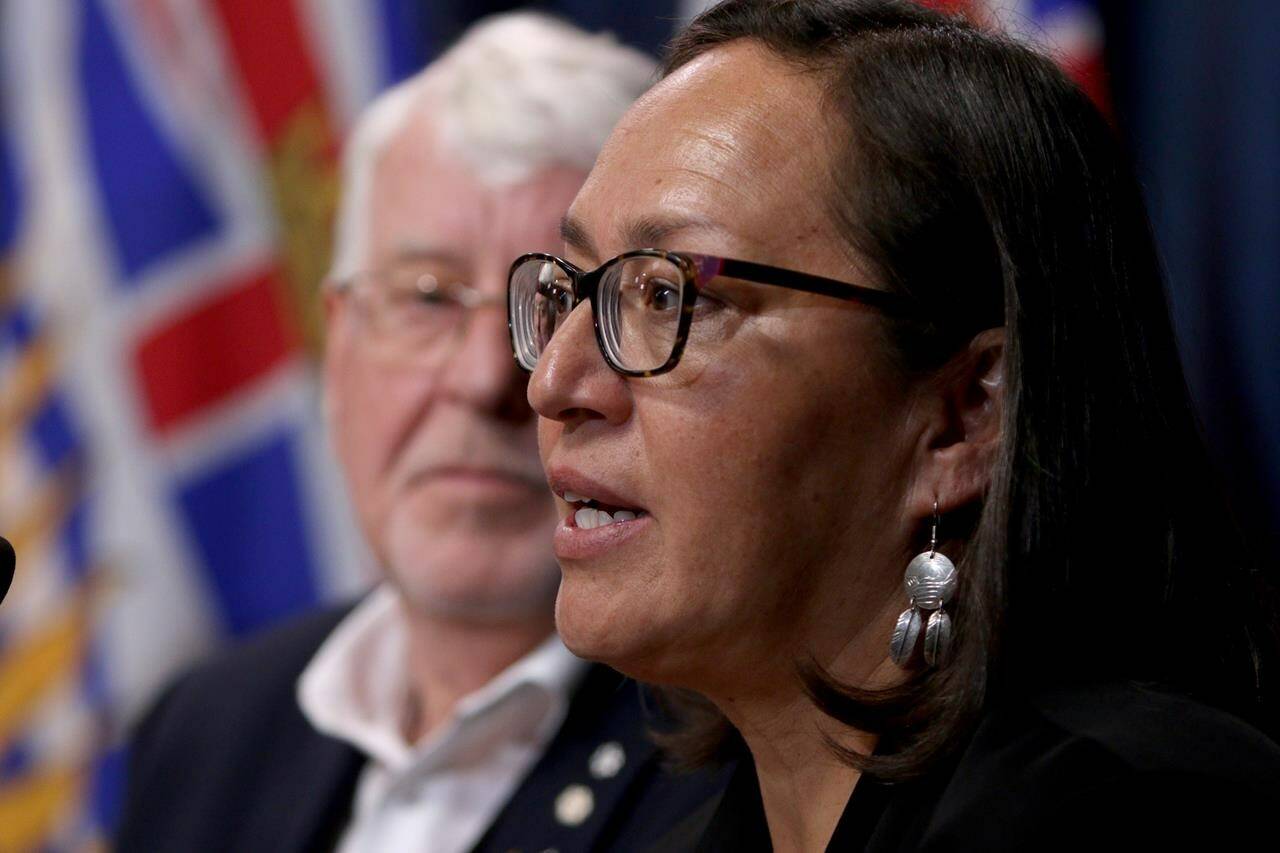Grand Chief Doug Kelly was just about to sit down for Thanksgiving dinner when his house phone rang.
He didn’t answer it, but then his cellphone rang.
It was a social worker from Surrey Memorial Hospital, who didn’t share a lot of details but was able to express the urgency. An hour and 15 minutes later, Kelly arrived at the hospital from Chilliwack.
“My daughter was in a very bad way,” Kelly told reporters Friday (April 21).
Kelly said his daughter Tara had taken drugs, which stopped her heart, and she hadn’t been breathing for a period of time before being resuscitated. According to the doctor and a specialist, her halt in breathing caused significant brain injury.
“I had to make a decision for my family to remove oxygen from my daughter, who died shortly thereafter.”
Tara was one of 373 Indigenous people in B.C. who died from toxic drugs in 2022, according to updated reports released Friday.
Indigenous people made up 16.4 per cent of the 2,314 toxic drug deaths in B.C. last year, despite only representing 3.3 per cent of the province’s total population.
Of those, 36.5 per cent identified as women – a stark contrast to the 18 per cent of all women in B.C. when including non-Indigenous deaths.
Kelly spoke during the First Nations Health Authority’s data release for toxic drug deaths on Indigenous people in B.C. He opened the event, offering a prayer about trauma.
“I spoke from experience.”
Kelly said his daughter had been on a healing journey for more than two years prior, joining a recovery family in Surrey that supported one another. Tara, he said, had “come a long way in putting so much of the pain, the trauma, the stigma away” and was rebuilding structure in her life “that you and I take for granted.”
The First Nations Health Authority says Indigenous people in B.C. are “particularly and disproportionately” affected by toxic drug deaths, and especially Indigenous women compared to the rest of B.C.’s female population.
“We cannot afford to lose more, and yet, we will,” said Dr. Nel Wieman, the FNHA acting chief medical officer. She noted 2022 was “the most devastating year.”
Richard Jock, CEO of FNHA, noted the update comes as the health authority is coming out of its response to COVID. Jock said the pandemic changes “many of the aspects of living, many of the patterns of communication.”
These changes and these different realities and degrees of isolation have really had their impact,” he explained, adding that while the FNHA acknowledged mental health would be the next direct challenge, they “didn’t anticipate the level of effects of toxic drugs that we’re seeing today.”
Last Friday (April 14) the province commemorated the seventh anniversary of the toxic drug crisis. At least 11,807 deaths have been caused by unregulated drugs since the public-health emergency was first declared in April 2016.
READ MORE: ‘The perfect storm’: more poisoning calls than ever as overdose crisis turns 7
READ MORE: ‘Without a regulated supply, everyone just dies’: Parade marks 7th year of toxic drug crisis
Wieman said it feels a bit strange to call it an emergency when it “starts to feel more like the status quo.”
The 373 Indigenous deaths in 2022 was a 6.3-per-cent increase from 2021, where 351 deaths were recorded.
First Nations groups first released data on toxic drug deaths in 2017, noting that Indigenous people are three times more likely to die of a drug overdose. They were also five times more likely to experience an overdose.
READ MORE: First Nations people in B.C. three times more likely to die of overdose
That rate has nearly doubled now.
By 2022, Indigenous people were dying at 5.9 times the rate of other British Columbians, which was up from 5.4 times in 2021.
But Weidman said the FNHA wanted to ground that data in stories.
“I can’t stand here before you today and talk about the people who died as brothers, sisters, aunties, uncles, mothers and fathers. I’ve done it for several years now, and I can’t do it today – I just can’t do it anymore,” she said.
“What I can do is tell you about the empty spaces and places that the First Nations people who have died because of toxic drugs have left, the holes in families, the empty spaces around dinner tables, the empty seats at schools, the empty seats at workplaces, the empty spaces at longhouse around the fires on the land and other ceremonial places.”
@laurenpcollins1
lauren.collins@blackpress.ca
Like us on Facebook and follow us on Twitter.

